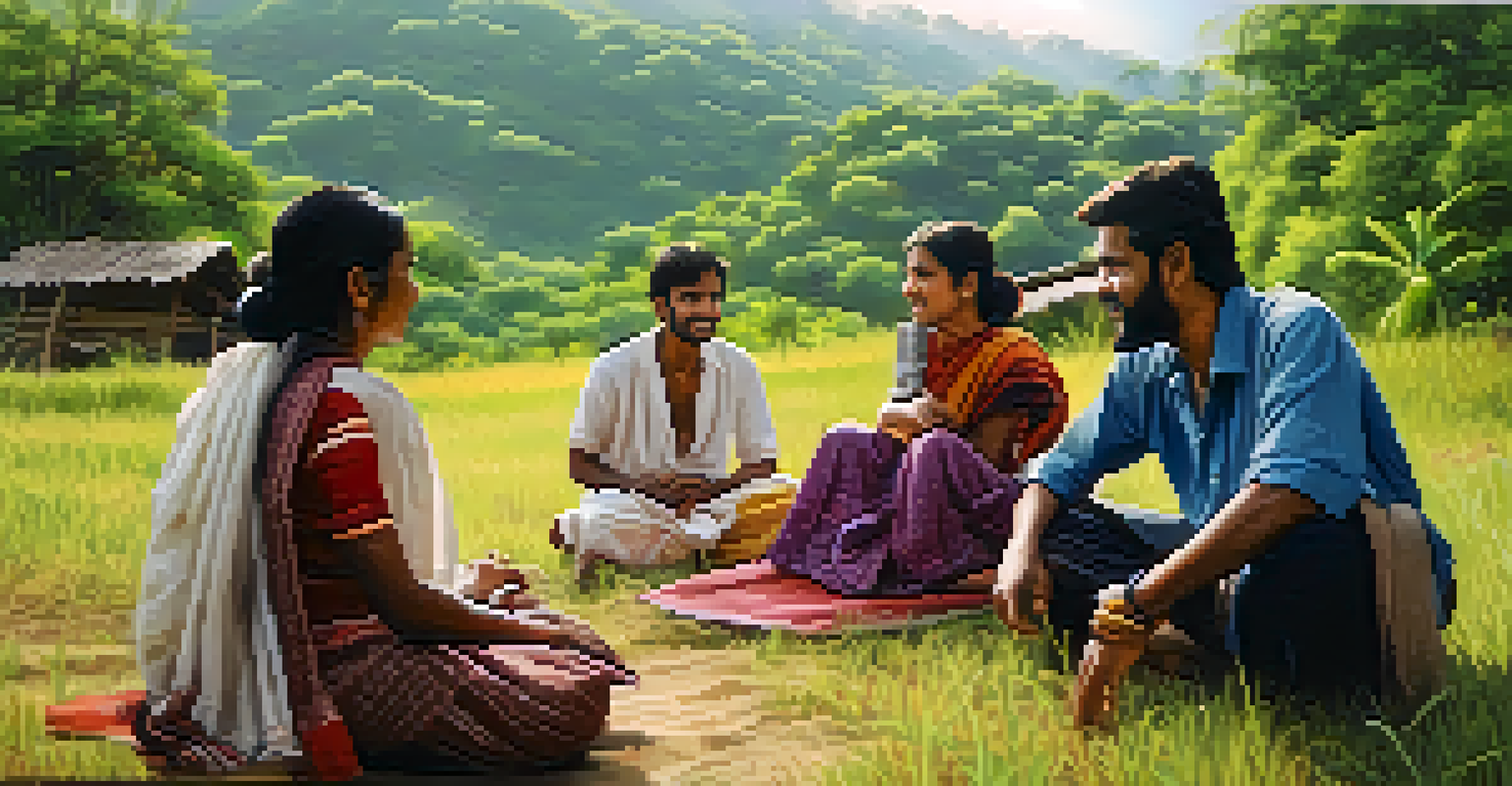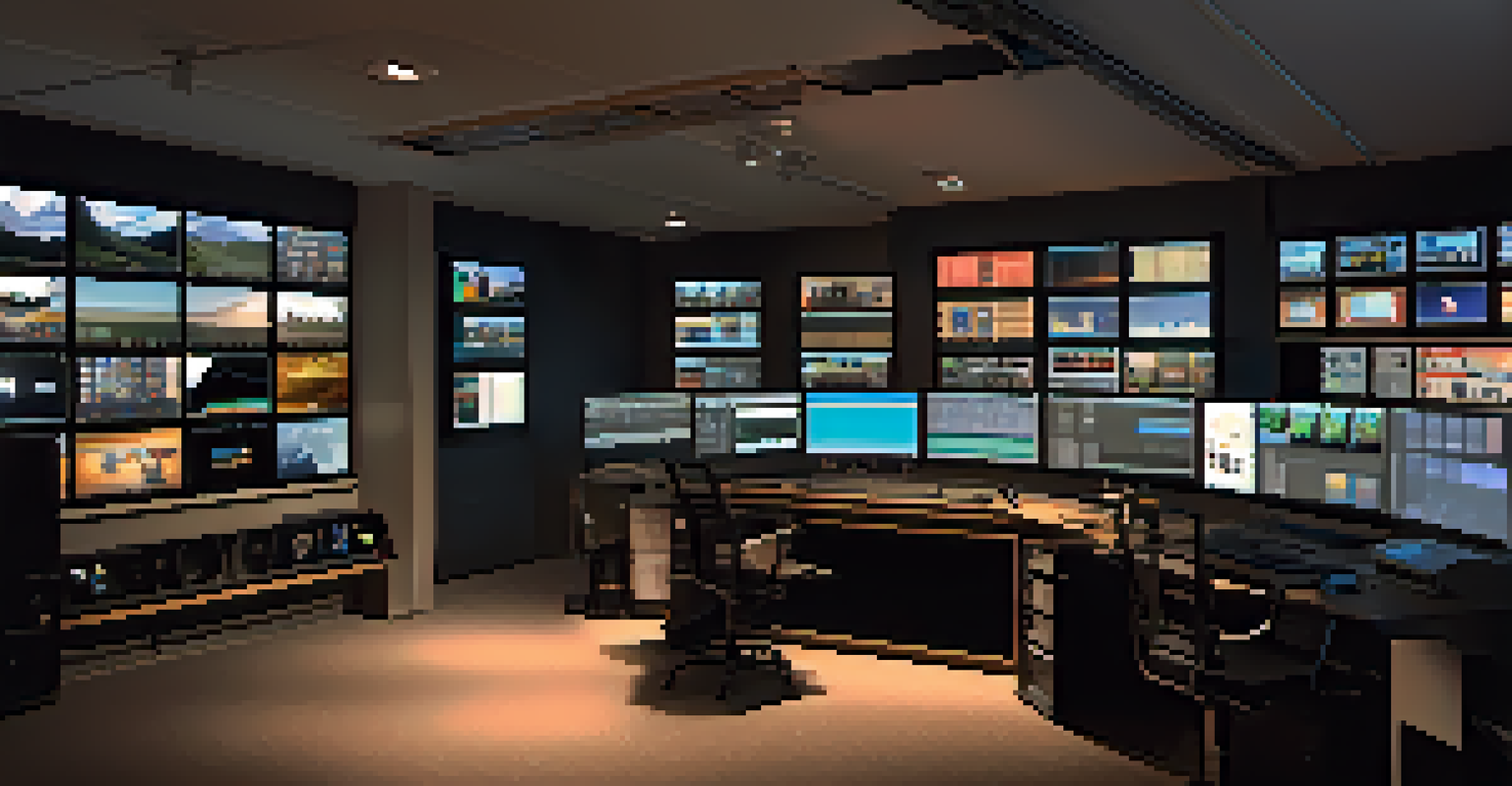The Evolution of Documentary Film: A Historical Perspective

The Birth of Documentary Film in the Early 20th Century
The roots of documentary film can be traced back to the early 1900s when filmmakers began capturing real-life events on camera. Early pioneers like Robert Flaherty created seminal works such as 'Nanook of the North' in 1922, which showcased the life of an Inuit family. This film not only marked a significant moment in documentary history but also blurred the lines between reality and storytelling.
Documentary films are a way of telling the truth about the world, and that truth has the power to change lives.
During this period, documentaries were often presented as a form of entertainment rather than educational tools. They captured the public's imagination, offering a glimpse into different cultures and lifestyles. The innovative techniques used by early filmmakers laid the groundwork for future documentary styles, emphasizing the importance of authenticity.
As technology progressed, so did the possibilities for documentary filmmakers. The introduction of sound in the late 1920s and color film in the 1930s allowed for richer storytelling and deeper engagement with audiences. This evolution was just the beginning of a fascinating journey through the world of documentary film.
The Golden Age of Documentaries: 1930s to 1950s
The 1930s to 1950s is often referred to as the Golden Age of documentaries, marked by a surge in popularity and production. This era saw the emergence of government-backed documentaries, especially during World War II, which aimed to inform and rally public support. Films like 'The Battle of Midway' captured the intensity of war, blending factual reporting with cinematic techniques.

During this time, filmmakers began to experiment with narrative structures and storytelling methods. The incorporation of personal narratives and social issues created a deeper emotional connection with audiences. Documentaries were no longer just about presenting facts; they began to evoke empathy and provoke thought.
Documentary's Early Evolution
The early 20th century marked the beginning of documentary filmmaking, blending real-life events with innovative storytelling techniques.
This period also witnessed the rise of influential documentary series such as 'The World at War,' which provided comprehensive insights into historical events. The combination of archival footage and expert interviews became a signature style that many documentaries still emulate today.
The Rise of Participatory and Observational Styles
The 1960s brought a shift in documentary filmmaking, with the rise of participatory and observational styles, largely influenced by the French New Wave. Filmmakers like Jean Rouch and Frederick Wiseman focused on immersing themselves in the lives of their subjects, capturing raw, unfiltered moments. This approach allowed audiences to witness events as they unfolded, creating a sense of immediacy.
The documentary is an art form that has the power to reveal the complexity of reality.
The participatory style blurred the lines between filmmaker and subject, as directors became active participants in the stories they were telling. This shift raised important questions about ethics and representation, challenging filmmakers to consider their impact on the narratives they were shaping. Audiences began to appreciate the complexity of real-life situations presented in these films.
Documentaries like 'Gimme Shelter' showcased this new approach, with filmmakers following the Rolling Stones on their 1969 tour. This film not only documented a moment in music history but also highlighted the chaotic social climate of the era, making it a powerful example of the evolving documentary form.
The Influence of Technology on Documentary Filmmaking
As technology advanced, so did the capabilities of documentary filmmakers. The introduction of lightweight cameras and portable sound equipment in the 1980s revolutionized how documentaries were made. Filmmakers could now capture events spontaneously, leading to a more authentic representation of reality.
Digital technology further transformed the landscape of documentary filmmaking in the 1990s and 2000s. The rise of digital editing software allowed for greater flexibility in post-production, enabling filmmakers to experiment with visual storytelling techniques. This era saw a surge in personal documentaries, where filmmakers explored their own lives and experiences.
Modern Documentaries as Advocacy
Recent documentaries increasingly focus on social issues, using compelling narratives to inspire awareness and action among viewers.
Streaming platforms have also played a crucial role in the evolution of documentaries. With the rise of services like Netflix and Hulu, audiences now have access to a vast array of documentary films from around the world. This democratization of content has opened doors for diverse voices and stories that might have gone unheard in traditional media.
The Impact of Social Issues on Modern Documentaries
In recent years, documentaries have increasingly focused on pressing social issues, reflecting the concerns of contemporary society. Filmmakers are using their platforms to shed light on topics such as climate change, racial injustice, and mental health. This shift has made documentaries an important tool for advocacy, encouraging viewers to engage with critical global challenges.
Films like '13th,' directed by Ava DuVernay, highlight systemic racism in the United States, sparking conversations and mobilizing audiences to take action. The power of storytelling in documentaries can evoke empathy and inspire social change, proving that film can be a catalyst for awareness and progress.
Moreover, the rise of social media has amplified the reach of these documentaries, allowing filmmakers to connect with audiences on a personal level. Viewers are now more engaged than ever, sharing their thoughts and experiences, which further fuels the conversation around these vital issues.
The Role of Documentary Film in the Age of Misinformation
In an era where misinformation is rampant, documentary films are becoming increasingly important as a source of credible information. With many viewers struggling to discern fact from fiction, well-researched documentaries offer a reliable alternative. Filmmakers have the responsibility to present factual content while also engaging audiences in meaningful narratives.
Documentaries like 'Won't You Be My Neighbor?' provide insights into complex subjects while maintaining a commitment to truth. They can effectively counteract misinformation by presenting verified facts coupled with compelling storytelling. This balance is crucial in fostering an informed public.
Tech Innovations Shape Documentaries
Advancements in technology, including VR and user-generated content, are transforming the documentary landscape and expanding diverse storytelling.
Furthermore, the accessibility of documentaries through streaming services enables audiences to seek out quality content. As viewers become more discerning, they are more likely to turn to documentaries as a trusted source of information, reinforcing the genre's relevance in today's media landscape.
The Future of Documentary Film: Trends and Innovations
Looking ahead, the future of documentary film is brimming with possibilities. Innovations in virtual reality (VR) and augmented reality (AR) are set to transform how audiences experience documentaries. These technologies can immerse viewers in the stories, providing a unique perspective that traditional films cannot offer.
Additionally, the rise of user-generated content is reshaping the documentary landscape. With smartphones and social media, anyone can become a storyteller, capturing their experiences and sharing them with the world. This trend democratizes filmmaking and allows for a diverse range of voices to be heard.

As we navigate an ever-changing media landscape, the essence of documentary filmmaking will continue to evolve. Filmmakers will find new ways to engage audiences, challenge societal norms, and tell impactful stories that resonate with viewers for years to come.